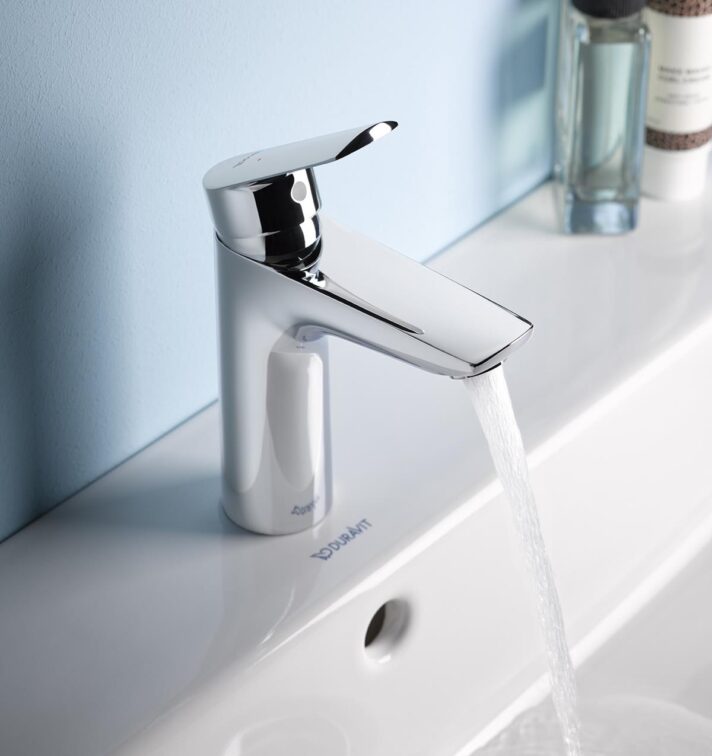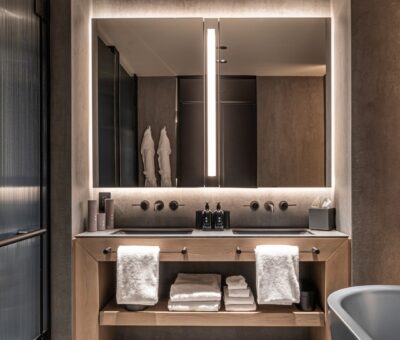Sustainable Architecture with Duravit
Sustainable architecture is about more than the external façade; the sanitary area plays a central role in the interior.
The building sector is particularly problematic in sustainability terms: “Since the dawn of the modern age, building has turned into something of a systemic error for our Earth and our environment,” said Prof. Amandus Samsøe Sattler. He is the President of the German Sustainable Building Council (DGNB e.V.), which has been advocating architecture that goes easy on resources and the environment for over 15 years. “At the heart of sustainable architecture is an approach to building that exacts as little harm as possible on the environment,” explains Sattler, who teaches as a professor at the IU International University of Applied Sciences. “However, the methods used for achieving sustainability are always changing.”
Water recycling at Duravit
The designer bathroom provider Duravit has made preserving the environment for future generations a clear goal. The aim of his extensive climate-related operations is to achieve global carbon-neutrality by 2045. This includes above all responsible handling of water. At its manufacturing site in Hornberg, Duravit is both reducing consumption and treating water. 60 percent of the water used is recycled, equivalent to 40 million liters of the total usage of almost 70 million liters. Water treatment has already been established at all Duravit sites, and the reclaimed water is used for different purposes depending on the site – whether to irrigate greenery or feed back into the production process.
Reducing water consumption, one eye on the supply chain
However, as an architect, Sattler explains that sustainability and the sparing use of water also matters beyond manufacturing. “The use of water is especially important in the sanitary sector, and that depends on the equipment you install.” The water-saving button alone that Duravit uses on all toilets, coupled with a targeted reduction of flushing volumes, enables annual savings of around 290 million liters of fresh water in Europe.
The Duravit No.1 faucet range has long-lasting ceramic cartridge for extra sustainability. Added to this is the energy-saving FreshStart function: the energy-intensive preparation of hot water is limited to situations in which it is actually used. In the central position, only cold water flows in the first instance. Only when the handle is deliberately moved to the left is hot water added to the mix. The throughput on washbasin faucets with MinusFlow is limited to 3.5 l/min compared to the standard 5 l/min.
However, Sattler wants manufacturers like Duravit to go a step further. “They need to be mindful of the whole supply chain, where the materials come from, and where or how they are disassembled and subsequently processed.” while keeping CO2 emissions to a minimum at all times. Duravit has long opted for a “local-for-local strategy” with regional manufacturers and procurement channels.
Recycling ever more important
According to Sattler, a further step in the direction of greater sustainability is to preserve legacy building stock, to renovate and reuse, and not necessarily to build from scratch. “Not only would that save resources, it would also help resources to recover.”
Nowadays recycling generally plays a very large part. In his faculty role at the IU, newbuilds are a minor component of the curriculum, Sattler reported. “We adopt a practice of handling materials that already exist,” adding that reuse entails the lowest quantity of CO2, which saves resources.
Duravit is committed to employing innovative, practical materials that are also sustainable. For that reason, the manufacturer of designer bathrooms is permanently researching new materials and improved surface properties. A material’s look, feel, ease of care, and safety are just as important factors as its durability and recyclability following the usage phase.
For more visit Duravit.
You might also like...
-
On Tap: Heart of the Home Sale

On Tap’s Heart of the Home Sale is now on, with exclusive offers and heart-fluttering savings on a range of premium quality bathroom and ...
-
Retro-Fit: How Cobra Shower Taps Can Fit into Existing Plumbing set-ups with Minimal Hassle

Upgrading your bathroom doesn’t have to mean tearing down tiles or undertaking costly renovations. With Cobra’s innovative retro-fit shower taps and head, you can ...
-
Classic Luxury: Elevating Everyday Living Through Global Design and Timeless Sophistication

Offering a unique customer-focused experience, Classic Luxury does not only sell things clients use in their homes; they sell the dream they live ...
-
10 Ways to Make Your Plumbing Fixtures a Decor Statement

Are your plumbing fixtures making or breaking your interior design scheme? The right bathroom and kitchen fixtures can serve as a stylish statement that elevates ...



























